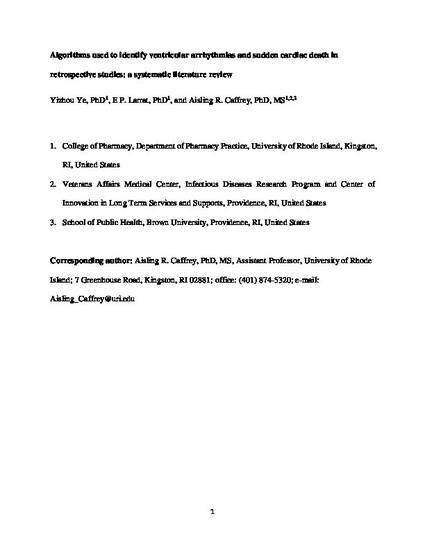
Drug-induced QT interval prolongation may increase the risk of sudden cardiac death or ventricular arrhythmias (SCD/VA), and therefore affects the safety profile of medications. Administrative databases can be used to inform pharmacoepidemiologic drug safety studies for such rare events. In order to compare event rates between studies, validated operational definitions of these events are needed. We conducted a systematic literature review in PubMed to identify algorithms for SCD/VA. Twenty-two studies were included in the review. Fifteen (68%) studies evaluated International Classification of Diseases, 9th revision (ICD-9) based medical data, of which six utilized a common, validated operational definition. This algorithm was based on principal hospitalization discharge diagnosis or first-listed emergency department visit diagnosis, with an average positive predictive value (PPV) of 85%. Four studies evaluated ICD-9 based death data, of which three utilized a common algorithm with an average PPV of 88%. Further validation of ICD, 10th revision algorithms are needed. In conclusion, we identified a validated algorithm for SCD/VA in medical data, as well as in death data. As such, to ensure comparability between new research and the existing literature, pharmacoepidemiologic research in this area should utilize common, validated algorithms, such as the ones identified in our review, to operationally define these events.
Ye Y, Larrat EP, Caffrey AR. Algorithms used to identify arrhythmias and sudden cardiac death in retrospective studies: a systematic literature review. Therapeutic Advances in Cardiovascular Disease 2018; 12(2):39-51. doi: 10.1177/1753944717745493
Available at: http://dx.doi.org/10.1177/1753944717745493
